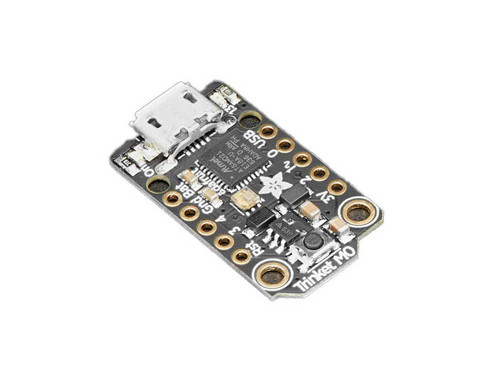It's a tiny microcontroller board, built around the Atmel ATtiny85, a little chip with a lot of power. The Attiny85 is a fun processor because despite being so small, it has 8K of flash, and 5 I/O pins, including analog inputs and PWM 'analog' outputs. It can be used for sensors and components that can use or require 5V logic and can run at 8 MHz or at 16MHz by setting the software-set clock frequency.
-
ATtiny85 on-board, 8K of flash, 512 byte of SRAM, 512 bytes of EEPROM
-
Internal oscillator runs at 8MHz, but can be doubled in software for 16MHz
-
USB bootloader with a nice LED indicator looks just like a USBtinyISP so you can program it with AVRdude (with a simple config modification) and/or the Arduino IDE (with a few simple config modifications)
-
Mini or Micro-B USB jack for power and/or USB uploading, you can put it in a box or tape it up and use any USB cable for when you want to reprogram.
-
~5.25K bytes available for use (2.75K taken for the bootloader)
-
Onboard power regulator with 150mA output capability and ultra-low dropout. Up to 16V input, reverse-polarity protection, thermal and current-limit protection
-
Power with either USB or external output (such as a battery) - it'll automatically switch over
-
On-board green power LED and red pin #1 LED
-
Reset button for entering the bootloader or restarting the program. No need to unplug/replug the board every time you want to reset or update!
-
5 GPIO - 2 shared with the USB interface. The 3 independent IO pins have 1 analog input and 2 PWM output as well. The 2 shared IO pins have 2 more analog inputs and one more PWM output.
-
Hardware I2C / SPI capability for breakout & sensor interfacing






